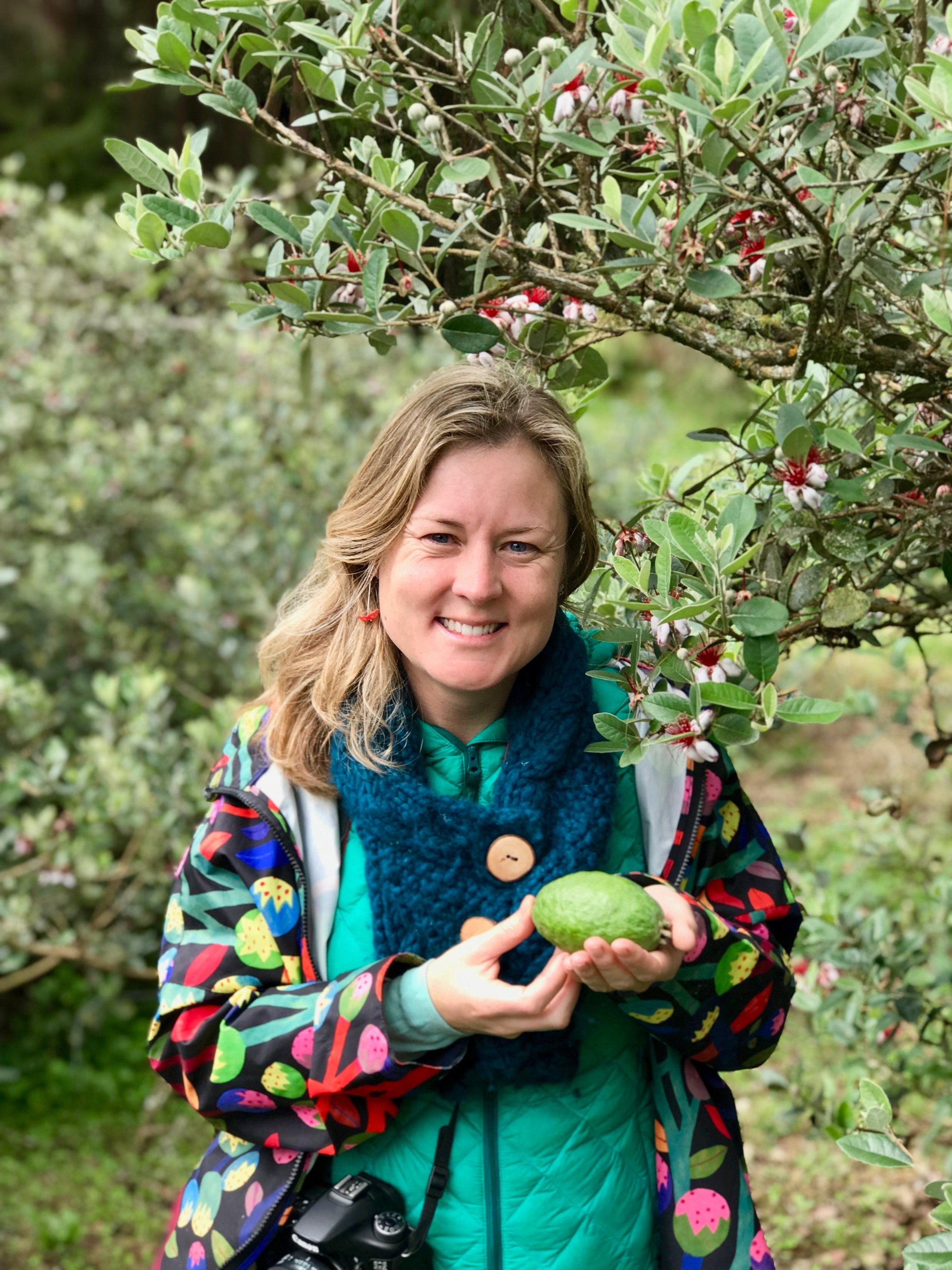The untold story of the feijoa
Every autumn, after the Mahurangi College school bus dropped her at the end of the gravel road, Kate Evans would walk home and, casting off her schoolbag, make straight for the feijoa tree by the gate. On those shortening April afternoons, the fragrant fruit would litter the ground in abundance. Kate and her sisters would cut them in half and spoon the gelatinous insides into their mouths – or just bite straight into them, the juice running down their chins. For Kate, it was the start of a feijoa obsession that would take her around the world and turn her into an author.
Kate spent her entire childhood in Leigh, then 12 years living overseas – Italy, Australia, Argentina and Indonesia. If she happened to find a feijoa, even at $3 each, she’d happily pay the price for the homesick hit of sweet nostalgia it provided. When she returned with her Australian partner to New Zealand at the start of 2014, she couldn’t wait for her first full feijoa season in years.
When it arrived – when the feijoas started falling and falling, and people gave them away at work and on the side of the road – she started wondering. Why are New Zealanders so attached to feijoas? How have they become a kind of ‘national fruit’ for us, when they come from Uruguay and Brazil? Who were the first feijoa-eaters, thousands of years ago, and what might the plant have meant to them? How did it get its unusual name? The questions led to more questions, and finding the answers took a decade of research, writing and travel.
In her book, FEIJOA: A Story of Obsession and Belonging, she traces the feijoa’s journey from South America to the South Pacific, via the French Riviera and California. In France, she discovers the lost garden of Edouard André, the landscape architect who first brought the feijoa to Europe. In Colombia, she is a guest of honour at the annual Festival of the Feijoa in the tiny Andean town of Tibasosa. She joins homesick Kiwi expats at a feijoa farm in Queensland, Australia. In New Zealand, she looks for feijoas in the heart of Te Urewera with Tūhoe chef Joe McLeod, and tastes the feijoas of the future at the Takaka home of enigmatic breeder Nigel Ritson.
Kate now lives in Raglan with her partner Sam and their two daughters, next door to Kate’s sister Monica and her family. The feijoas they all planted there still symbolise home – but now also the myriad stories and invisible threads connecting this special plant to fellow feijoa obsessives, distant in space and time.
Kate’s feijoa travels were funded by the Winston Churchill Memorial Trust and Creative New Zealand. You can buy FEIJOA in all good bookshops and online from March 2024.
